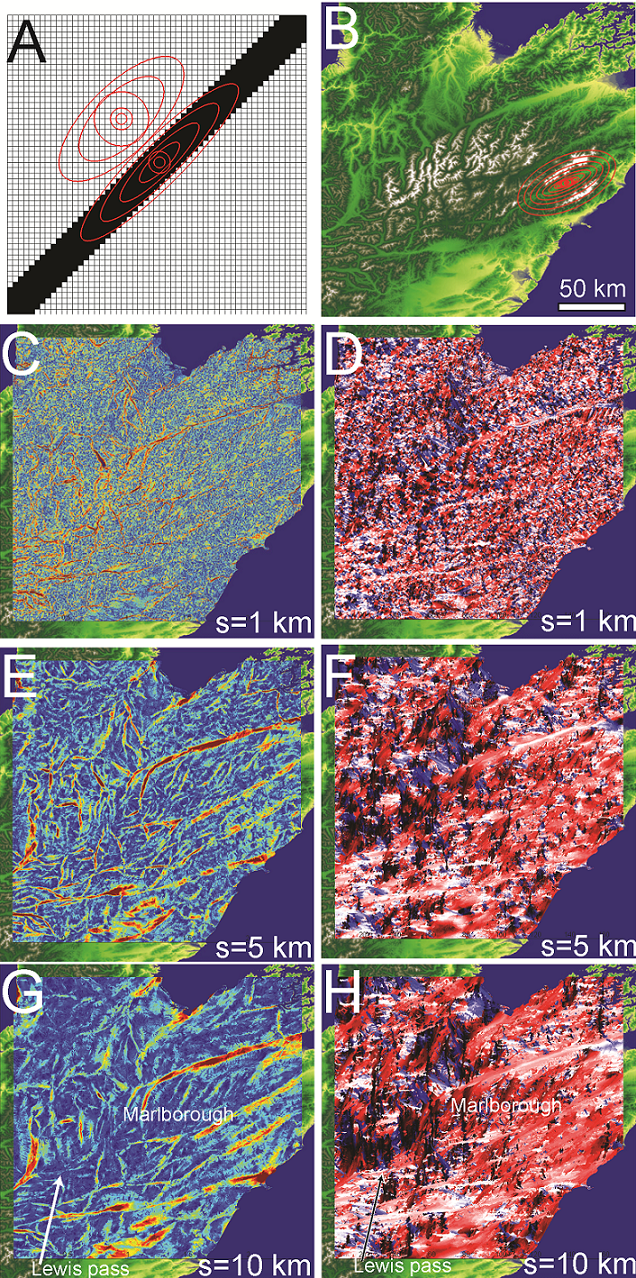Difference between revisions of "Topographic Anisotropy Figure 6"
| Line 1: | Line 1: | ||
| − | [[File:Vario figures copy Page 06.png|center| | + | [[File:Vario figures copy Page 06.png|center|350px]] |
'''Figure 6''': A) Low relief trough bisecting high relief plateau; a simplified replication of fault damage influenced topography. B) Anisotropy measured at single point in Marlborough. Anisotropy measured up to maximum wavelength of 37.5 km. C) Anisotropy magnitude and D) orientation map at 1 km, E) F) 5 km, and G) H) 10 km wavelength. | '''Figure 6''': A) Low relief trough bisecting high relief plateau; a simplified replication of fault damage influenced topography. B) Anisotropy measured at single point in Marlborough. Anisotropy measured up to maximum wavelength of 37.5 km. C) Anisotropy magnitude and D) orientation map at 1 km, E) F) 5 km, and G) H) 10 km wavelength. | ||
Revision as of 17:42, 10 March 2015
Figure 6: A) Low relief trough bisecting high relief plateau; a simplified replication of fault damage influenced topography. B) Anisotropy measured at single point in Marlborough. Anisotropy measured up to maximum wavelength of 37.5 km. C) Anisotropy magnitude and D) orientation map at 1 km, E) F) 5 km, and G) H) 10 km wavelength.
